Looking to restore confidence with a smoother abdomen? At the New York Liposuction Center, our tummy tuck procedures can help.
What is a Tummy Tuck with Liposuction?
If you’re struggling with loose or excess skin around your abdomen after pregnancy, weight loss, or aging, a tummy tuck can help restore a firmer, more sculpted appearance. This procedure, also known as abdominoplasty, removes excess skin and tightens the abdominal muscles, which helps you regain a smoother, toned midsection.
- Tummy tuck: Removes excess skin and tightens abdominal muscles to create a smoother, firmer abdomen.
- Liposuction: This can be combined to remove excess fat from the abdomen, flanks, or love handles, to enhance the overall contour.
I understand that achieving a flatter, toned abdomen can be challenging even with diet and exercise. My approach focuses on providing natural-looking results that enhance your body’s contours to help you feel more confident and comfortable in your skin.
Tummy Tuck vs Liposuction
Before deciding on a combined procedure, it’s important to understand how each component addresses different concerns:
Tummy Tuck Benefits
- Skin Removal: Eliminates loose, sagging skin that often remains after pregnancy or significant weight loss
- Muscle Repair: Addresses separated abdominal muscles that can happen after pregnancy
- Contour Enhancement: Creates a smoother, firmer abdominal profile through tissue restructuring
Liposuction Advantages
- Fat Reduction: Precisely removes stubborn stomach fat deposits resistant to diet and exercise
- Shape Refinement: Improves body proportions through strategic fat removal
- Enhanced Definition: Creates smoother transitions between treated areas and surrounding tissue
Combined Procedure Benefits
- Comprehensive Results: Addresses all aspects of abdominal contouring in one coordinated surgical plan
- Optimized Healing: Single recovery period for both procedures
- Enhanced Outcomes: Each procedure complements the other for optimal results
For patients seeking additional body contouring, we might discuss complete body lift or breast enhancement.
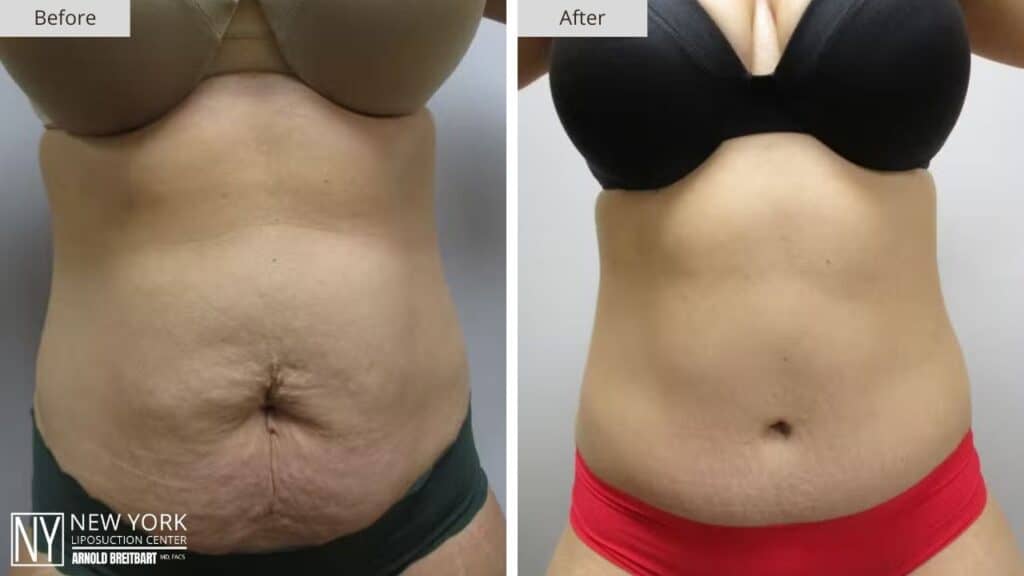
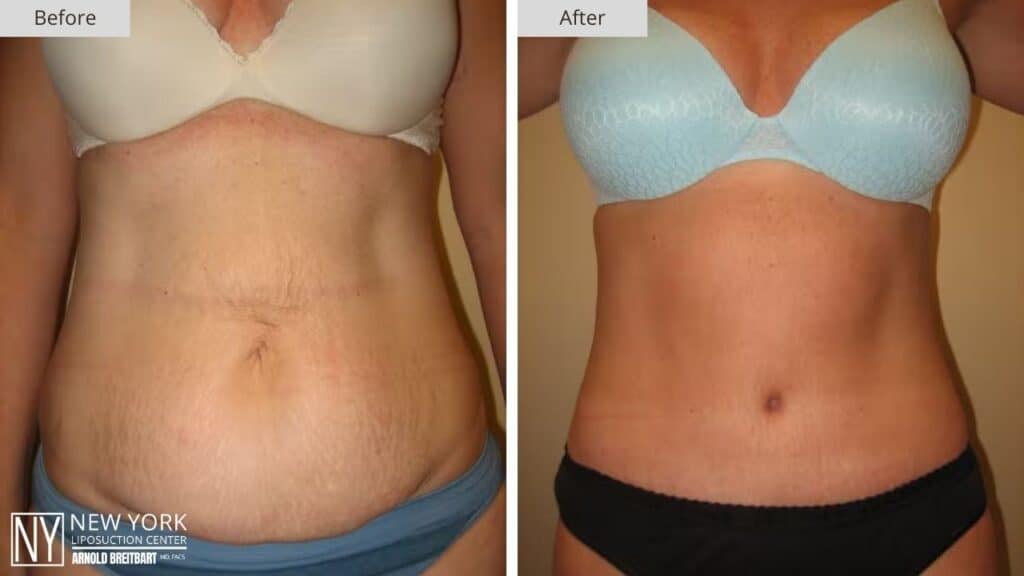
Benefits of Combined Tummy Tuck and Liposuction
A well-planned liposuction procedure offers multiple advantages when combined with a tummy tuck:
- Complete Transformation: Addresses skin laxity, muscle weakness, and excess fat simultaneously
- Natural Contours: Creates smooth, natural-looking results through strategic fat removal and skin tightening
- Long-lasting Results: When maintained with a healthy lifestyle, results can last for many years
- Single Recovery: Optimize your healing time by combining procedures
Many patients who undergo abdominal contouring may also think about arm lift or breast augmentation options.
Tummy Tuck Procedure
It is important to understand the technical aspects of your combined procedure. Let me walk you through our approach to achieving the best results possible.
Preparation
Before surgery, we conduct detailed measurements and surgical planning. For mothers seeking even more rejuvenation, we might discuss incorporating these procedures into a complete mommy makeover restoration plan.
Liposuction Component
- Strategic Approach: We begin with precise liposuction to sculpt the abdomen and surrounding areas such as the FUPA to create smooth transitions and natural-looking contours
- Advanced Techniques: Using state-of-the-art liposuction methods, we carefully remove fat deposits while preserving important supporting tissues
- Comprehensive Contouring: The procedure often includes treating the flanks and back for balanced results
- Foundation Setting: This initial step helps optimize the skin tightening component of your tummy tuck
Tummy Tuck Component
- Muscle Restoration: We carefully repair and tighten separated abdominal muscles, creating a stronger, flatter foundation
- Tissue Restructuring: Excess skin is precisely removed and the remaining tissue is redraped
- Refined Closure: Advanced suturing techniques promote optimal healing and minimal scarring
- Final Contouring: Additional fine-tuning ensures smooth, natural-looking results
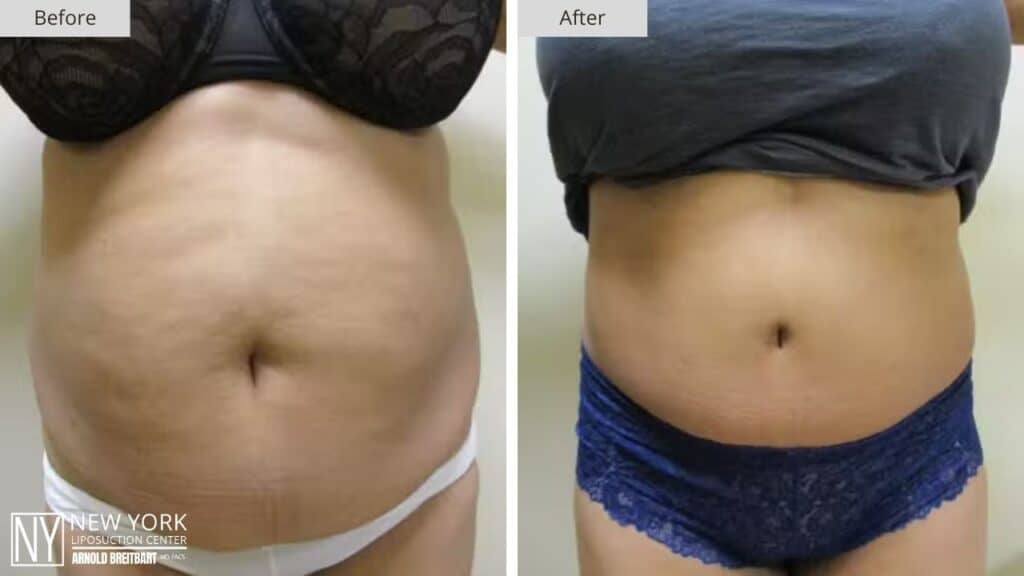
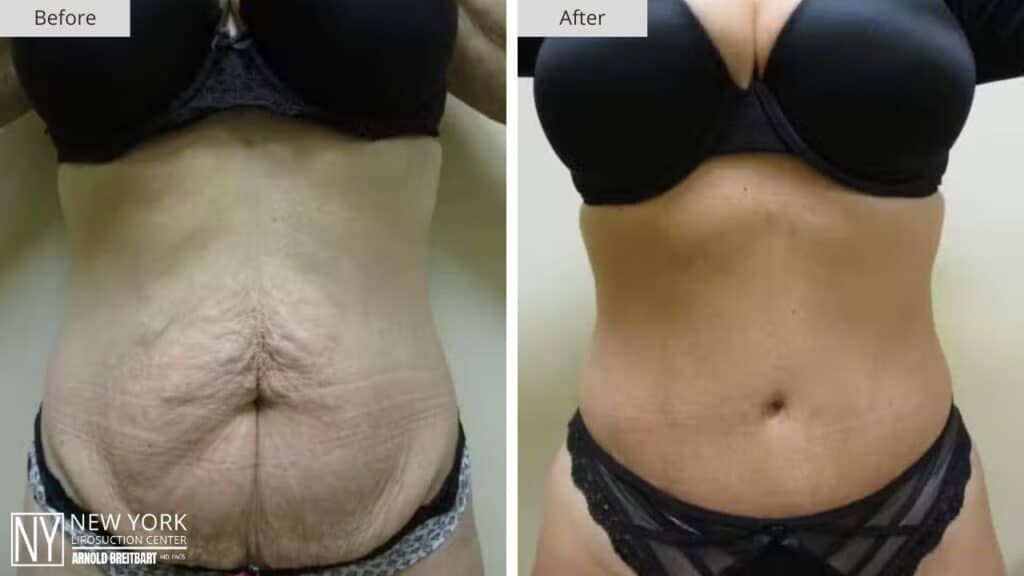
Recovery and Aftercare
Your recovery plays a crucial role for optimal results. Let me guide you through what to expect.
The initial recovery period typically spans 2-3 weeks, when most patients can return to work depending on their job requirements and comfort level.
Key Recovery Milestones:
- Week 1: Rest, proper wound care, and prescribed medications while maintaining a slightly flexed position
- Weeks 2-3: Gradual return to light daily activities while wearing compression garments
- Weeks 4-6: Progressive increase in activities as comfort allows
- Months 2-3: Return to most normal activities while following long-term care instructions
Patients should maintain realistic expectations and commit to the full recovery process. Remember that final results continue to develop over several months as swelling resolves and tissues settle. Our NY liposuction team remains available throughout your recovery to monitor progress and address any concerns.
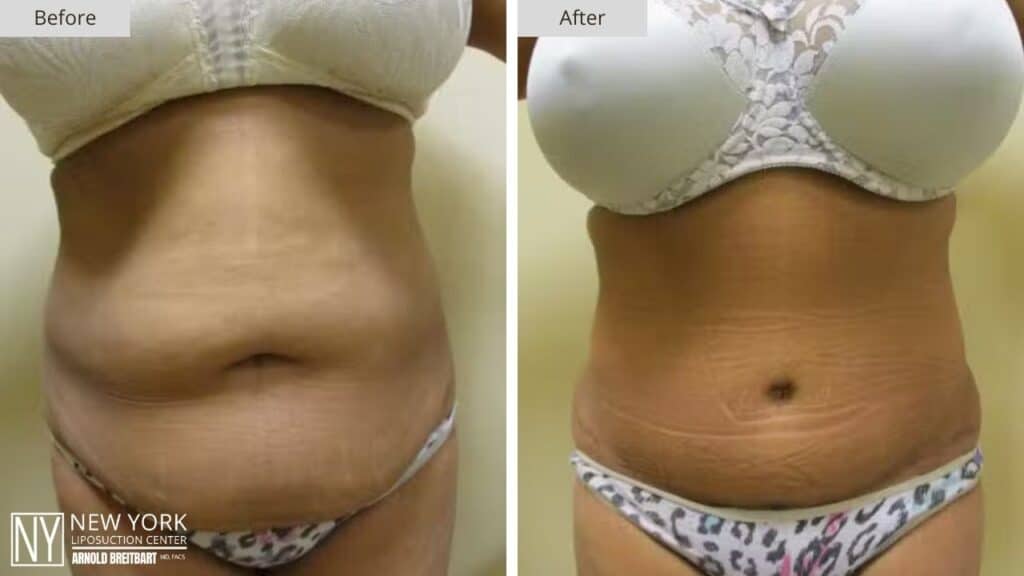
Frequently Asked Questions
Here are answers to common questions my patients ask during tummy tuck consultations.
Q: Am I a good candidate for combined procedures?
A: Ideal candidates are healthy, at a stable weight, and have both excess skin and fat they’d like to address. We’ll discuss your specific needs during our consultation.
Q: What’s the recovery time compared to individual procedures?
A: While recovery from combined procedures may be slightly longer, you benefit from a single recovery period rather than two separate ones. Most patients return to work within 2-3 weeks.
Q: How long will my results last?
A: Results can be long-lasting when maintained with a stable weight and healthy lifestyle. The removed fat cells and excess skin won’t return, though the remaining tissues can still be affected by significant weight changes.
Q: Will I have visible scars?
A: While scars are necessary, we carefully place them low on the abdomen where they’re easily concealed by clothing. Most patients find their scars fade significantly with proper care.
Q: Can I combine this with other procedures?
A: Yes, many patients choose to coordinate their tummy tuck and liposuction with other plastic surgery procedures. We’ll discuss your goals during the consultation.
Your journey to a more confident you starts with a personalized consultation. Together, we’ll create a customized surgical plan that addresses your unique needs and helps you achieve your goals.
Schedule a Free Consultation
Fill out the form or at call us at (917) 809-7787 to schedule your free consultation with the New York Liposuction Center and get started on your liposuction journey.